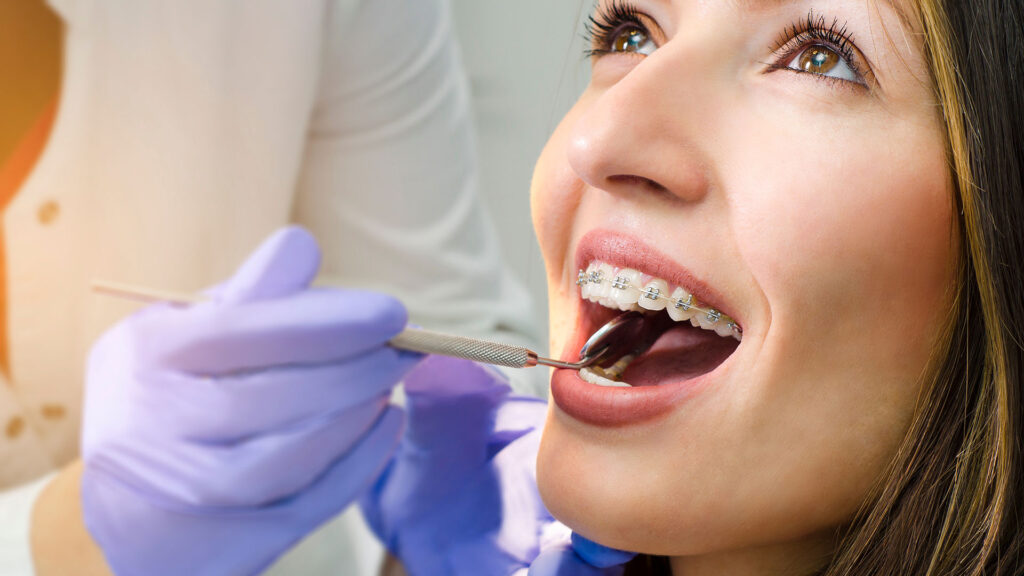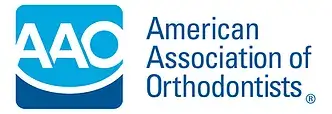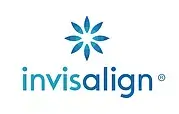Braces can be a life-changing orthodontic treatment, but they also come with their fair share of side effects. If you’re considering braces or currently undergoing orthodontic treatment, it’s crucial to understand the potential effects they may have on your oral health and overall well-being. Are you aware of the side effects of wearing braces? Do you know how to manage them effectively? Let’s explore the common side effects of braces and discover strategies to minimize discomfort and maximize the benefits of orthodontic treatment.
Key Takeaways:
- Wearing braces can lead to various side effects and discomforts.
- Understanding the potential side effects helps in preparing for orthodontic treatment.
- Proper care and management can minimize or alleviate the side effects of braces.
- Addressing the side effects will ensure a smooth and successful orthodontic treatment journey.
- Consulting with orthodontic professionals is essential for guidance and support.
Understanding Orthodontic Treatment and Braces
Orthodontic treatment is an effective solution for correcting misalignments and abnormalities in the teeth and jaw, ultimately improving dental aesthetics, function, and overall oral health. Central to orthodontic treatment are braces, which consist of brackets, wires, and other components that work together to gradually move the teeth into their desired positions.
Braces utilize gentle pressure to guide the teeth through the bone, allowing them to be repositioned over time. Through this process, orthodontic treatment can correct issues such as crooked teeth, overcrowding, gaps, and bite problems.
By exerting controlled forces on the teeth, braces encourage the bone to remodel and adapt to the new tooth positions. This gradual movement enables a healthier alignment and bite, which contribute to improved chewing, speech, and overall oral function.
Orthodontic treatment typically begins with a comprehensive evaluation by an orthodontist. During this assessment, digital x-rays, photographs, and impressions may be taken to create a personalized treatment plan. The orthodontist will then determine the optimal braces type and design, considering factors such as the severity of the dental issue, patient preferences, and treatment goals.
Once braces are placed, regular adjustments and check-ups are necessary to ensure that the teeth are moving as planned and to make any necessary modifications. The treatment duration can vary depending on factors such as the complexity of the case and the individual’s response to treatment.
In addition to traditional metal braces, there are also alternatives available, such as ceramic braces or clear aligners. These options offer more discreet treatment while still delivering effective results.
Overall, orthodontic treatment with braces is a proven method for achieving a straighter smile, improved dental health, and enhanced confidence. The next sections will discuss the various side effects and challenges that may arise during orthodontic treatment and provide strategies for managing them effectively.
Initial Discomfort and Adjustment Period
When braces are first placed on the teeth, it is common to experience initial discomfort and an adjustment period. The teeth and gums may feel sore, and there may be difficulty in speaking and eating. However, these discomforts are temporary and usually subside within a few days to a week.
During the adjustment period, the mouth is adapting to the presence of braces and the pressure applied to the teeth. This process may cause some sensitivity or discomfort, but it is an essential part of the orthodontic treatment journey. It signifies that the braces are starting to do their job and move the teeth into alignment.
While the initial discomfort can be challenging, there are several tips and strategies to help manage it:
- Take over-the-counter pain relievers, such as ibuprofen, as recommended by your orthodontist.
- Apply orthodontic wax to any areas of your braces that are causing irritation or rubbing against your gums or cheek.
- Eat soft foods that require less effort to chew, such as soups, yogurt, and mashed potatoes, during the first few days after getting braces.
- Practice good oral hygiene by brushing gently and using a soft-bristled toothbrush to avoid further irritation.
- Rinse your mouth with warm saltwater solution to help alleviate soreness and promote healing.
Remember, it is important to be patient and allow your mouth to adjust to braces. The initial discomfort will gradually subside, and you will become more accustomed to wearing them. If the discomfort persists or becomes severe, it is crucial to contact your orthodontist for guidance and support.
Mild to Moderate Pain and Soreness Effects
Throughout the orthodontic treatment process, individuals may experience mild to moderate pain and soreness. This discomfort is primarily caused by the pressure exerted on the teeth and the movement of the jawbone. As the braces gradually shift the teeth into their desired positions, it’s common to feel some degree of discomfort.
Experiencing pain and soreness with braces is a normal part of the orthodontic journey. It demonstrates that the braces are working to realign your teeth. However, it’s important to manage this discomfort effectively to maintain your well-being and ensure a comfortable treatment experience.
To relieve braces pain and soreness, there are several strategies you can try:
- Over-the-counter pain relievers: Non-prescription pain medications such as ibuprofen can help alleviate discomfort. Always follow the recommended dosage guidelines.
- Warm saltwater rinses: Gargling with warm saltwater can help reduce inflammation and soothe sore gums. Mix 1/2 teaspoon of salt in 8 ounces of warm water, then swish it around your mouth for 30 seconds before spitting it out.
- Soothing oral gels: Topical oral gels containing benzocaine can provide temporary relief by numbing the affected areas. Apply a small amount directly to the gums as directed on the product packaging.
- Soft food diet: Stick to soft, easy-to-chew foods that don’t require excessive biting and chewing. This will minimize the strain on your teeth and reduce discomfort during meals.
- Orthodontic wax: If your braces are rubbing against the inside of your cheeks or lips, applying a small amount of orthodontic wax to the brackets can create a smooth surface and prevent irritation.
- Regular adjustments: Attend scheduled appointments with your orthodontist for adjustments. They will make necessary modifications to the braces to ensure optimal comfort and progress in your treatment.
By following these strategies and maintaining open communication with your orthodontist, you can effectively manage the pain and soreness associated with wearing braces. Remember, minor discomfort is temporary and signifies positive changes happening in your smile. Stay patient, and soon you’ll be rewarded with a beautifully aligned set of teeth.
Oral Hygiene Challenges with Braces
Wearing braces can present challenges when it comes to maintaining optimal oral hygiene. The brackets and wires of braces can trap food particles, making it more challenging to clean the teeth effectively. This can lead to plaque buildup, tooth decay, and gum problems if not addressed properly. To ensure proper dental care during orthodontic treatment and maintain good oral hygiene, follow these tips:
- Brushing technique: Use a soft-bristled toothbrush and brush at a 45-degree angle, making sure to clean the brackets, wires, and the areas between the teeth. Brush for at least two minutes, twice a day.
- Flossing: Use a floss threader or orthodontic floss to clean between the teeth and under the wires. Gently thread the floss between the teeth and carefully remove any food particles or plaque. Aim to floss at least once a day.
- Interdental brushes: Consider using interdental brushes to clean between the brackets and wires, especially in hard-to-reach areas. These small brushes can effectively remove debris and plaque.
- Mouthwash: Incorporate an antimicrobial mouthwash into your oral hygiene routine to help kill bacteria and freshen your breath. Look for mouthwashes specifically designed for orthodontic patients.
- Dietary considerations: Avoid sticky, hard, or chewy foods that can get stuck in the braces or damage them. Opt for softer foods and cut fruits and vegetables into smaller, bite-sized pieces.
Remember to visit your orthodontist regularly for check-ups and professional cleanings. They can assess the condition of your braces, provide guidance on oral hygiene, and make any necessary adjustments to ensure the success of your orthodontic treatment.
Gum Inflammation and Irritation
Braces can sometimes lead to gum inflammation and irritation, especially if proper oral hygiene is not maintained. When wearing braces, it can be more challenging to clean the gumline effectively, which can result in plaque buildup and potential gum problems.
Gum inflammation from braces occurs due to the accumulation of plaque and food particles around the brackets and wires. This can lead to redness, swelling, tenderness, and even bleeding of the gums. To prevent gum inflammation and irritation, it is crucial to prioritize oral hygiene and take specific measures to protect your gums during orthodontic treatment.
First and foremost, maintaining a consistent and thorough oral hygiene routine is paramount. This includes brushing your teeth at least twice a day, using a soft-bristle toothbrush to clean the gumline gently. Pay close attention to cleaning around the brackets and wires, as plaque easily accumulates in these areas. Consider using an interdental brush to clean between the brackets and wires, reaching areas that regular brushing may miss.
In addition to brushing, daily flossing is essential to remove plaque and food particles from between the teeth. Floss threaders or special orthodontic floss can help maneuver around the braces for a thorough cleaning.
Furthermore, rinsing with an antimicrobial mouthwash can help reduce inflammation and maintain a healthy oral environment. Look for a mouthwash specifically formulated for individuals with braces, as they typically contain antibacterial properties and can reach areas that brushing and flossing alone may not reach.
Regular visits to your dentist or orthodontist are also crucial in preventing gum inflammation and monitoring your oral health during orthodontic treatment. They can provide professional cleanings to remove any stubborn plaque and offer advice on maintaining oral hygiene with braces.
By prioritizing proper oral hygiene practices and taking steps to protect your gums, you can minimize the risk of gum inflammation and irritation while wearing braces. Remember, maintaining a healthy mouth is an essential part of achieving successful orthodontic treatment.+
Eating Restrictions and Food Adaptations
When wearing braces, it is necessary to make adjustments to your eating habits and food choices to ensure the success and comfort of your orthodontic treatment. Certain foods can pose a risk to your braces, potentially damaging them or getting stuck, leading to discomfort and possible setbacks in your treatment progress. To maintain a healthy diet while wearing braces, it is important to be aware of the eating restrictions and make appropriate food adaptations.
One common restriction when wearing braces is avoiding hard, sticky, and chewy foods. These types of foods can exert excessive pressure on the brackets and wires, increasing the risk of breakage or dislodgement. It is best to steer clear of items like hard candies, caramel, popcorn, chewing gum, nuts, and tough meats.
In addition to avoiding certain foods, it is also essential to modify the way you eat. Cutting food into smaller pieces and chewing slowly and carefully can help minimize the strain on your braces and reduce the chances of food getting stuck. Taking smaller bites and using your back teeth to chew can also be beneficial.
To maintain a well-rounded diet, it is important to focus on foods that are braces-friendly. Soft foods are generally easier to eat with braces and reduce the risk of discomfort or damage. Incorporating options like mashed potatoes, smoothies, yogurt, soups, cooked vegetables, and lean proteins can provide the necessary nutrients while being gentle on your braces.
It is also crucial to maintain good oral hygiene as food particles can easily get trapped around brackets and wires. Regularly brushing and flossing your teeth, as well as using interdental brushes or water flossers, can help prevent plaque buildup and keep your braces clean.
Consulting with your orthodontist or dental professional can provide valuable guidance on specific eating restrictions and food adaptations based on your unique orthodontic treatment plan. By following these recommendations and making the necessary adjustments to your diet, you can successfully navigate the eating challenges associated with braces and maintain a healthy smile throughout your treatment.
Speech Impediments and Adaptation
Wearing braces can temporarily impact speech patterns and cause certain speech impediments. This is usually a result of adjusting to the presence of braces and the changes in oral structure. However, with time and practice, most individuals adapt and regain their normal speech patterns.
Speaking with braces may initially feel different and may lead to difficulties in pronunciation and enunciation. The presence of braces, such as brackets and wires, can affect the positioning of the tongue and lips, which are crucial for clear speech.
During the initial adjustment period, speech impediments such as lisping, slurring, or difficulty pronouncing certain sounds may occur. This is because the braces may interfere with the proper alignment and movement of the articulators involved in speech production.
For example, the “s” sound may become more challenging to articulate due to the presence of braces. However, it is important to note that these issues are typically temporary and improve as the individual adapts to the braces.
Adapting to speaking with braces requires patience and practice. Here are some tips to help individuals overcome speech impediments:
- Practice Pronunciation: Engaging in regular speech exercises and practicing the pronunciation of challenging sounds can help train the muscles and improve speech clarity.
- Speak Slowly and Clearly: By consciously speaking slowly and enunciating each word, individuals can enhance the clarity of their speech and minimize the impact of braces on their pronunciation.
- Read Aloud: Reading books or articles aloud can provide opportunities to practice speech with braces and gradually improve articulation.
- Work with a Speech Therapist: If speech difficulties persist or cause significant distress, working with a speech therapist specializing in orthodontic patients can be beneficial. They can provide personalized exercises and guidance to address specific speech challenges.
It’s important to remember that everyone’s adaptation process is unique, and it may take time before speech patterns fully normalize. With consistent practice and patience, individuals can successfully overcome speech impediments and regain their confident communication abilities.
Maintaining Oral Health during Orthodontic Treatment
During orthodontic treatment, maintaining excellent oral health is crucial to minimize the risk of complications and achieve the best possible outcome. This section provides comprehensive guidance on proper dental care with braces, ensuring that you can maintain oral hygiene effectively.
Brushing your teeth regularly and correctly is essential for oral health with braces. Use a soft-bristled toothbrush and fluoride toothpaste to clean your teeth after each meal and before bedtime. Pay extra attention to cleaning around the brackets and wires, as they can trap food particles and plaque.
Flossing, although slightly more challenging with braces, is still a crucial part of oral hygiene. Use a floss threader or orthodontic floss to help navigate around the wires and brackets. Gently glide the floss between each tooth, removing any plaque or food particles.
In addition to brushing and flossing, using supplementary oral hygiene tools can further enhance oral health during orthodontic treatment. Interdental brushes, water flossers, and antimicrobial mouthwashes are beneficial additions to your dental care routine. Consult with your orthodontist for recommendations on which tools are most suitable for your needs.
While maintaining oral hygiene at home is vital, regular dental check-ups and professional cleanings are equally important. Schedule regular visits with your dentist or orthodontist to monitor your oral health and address any concerns. They can provide professional cleanings to remove stubborn plaque and offer guidance on proper dental care during orthodontic treatment.
By following these recommendations for dental care with braces, you can maintain excellent oral health throughout your orthodontic journey. Remember to practice good oral hygiene diligently to achieve the best possible results.
Conclusion
In conclusion, the journey of wearing braces can come with various side effects and discomforts. However, with proper care and management, these effects can be minimized or alleviated. It is important for individuals undergoing orthodontic treatment to understand the potential side effects of wearing braces and seek guidance from orthodontic professionals.
By working closely with orthodontists, patients can navigate the challenges that may arise throughout their treatment. Orthodontic professionals have the knowledge and expertise to provide valuable insights and advice on managing side effects effectively.
Remember, orthodontic treatment is a transformative process that requires patience and dedication. Embracing the temporary side effects can lead to long-term benefits, such as improved dental aesthetics, function, and overall oral health.
So, if you are considering orthodontic treatment and braces, rest assured that with the right support and proactive approach, you can embark on a smooth and successful orthodontic journey.









